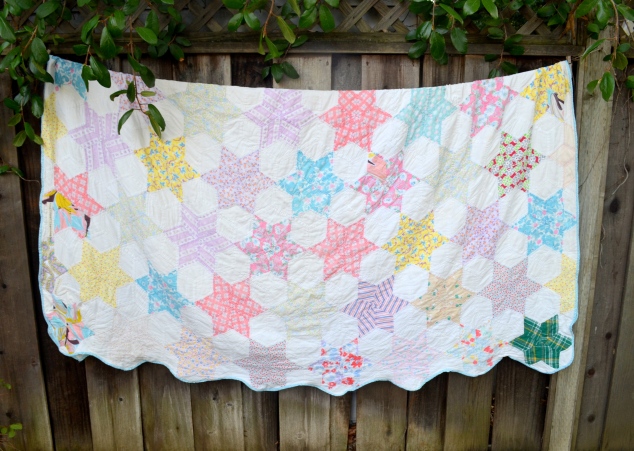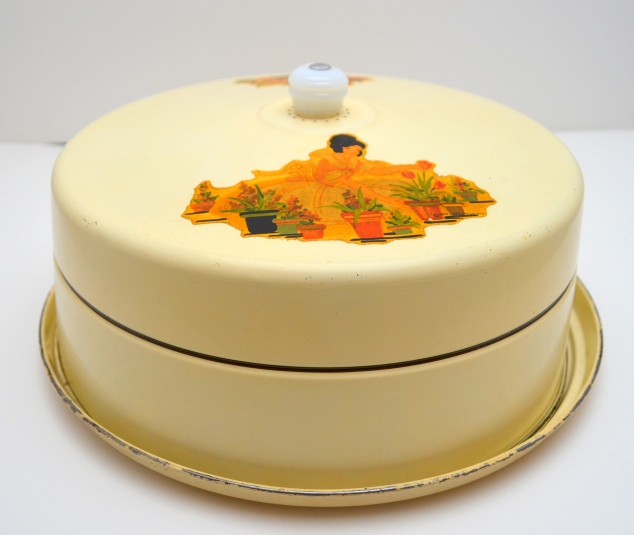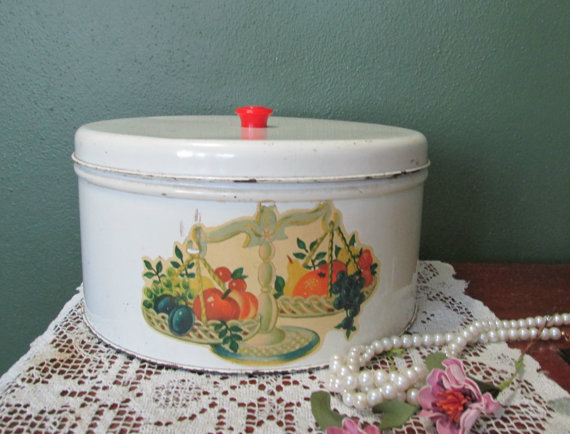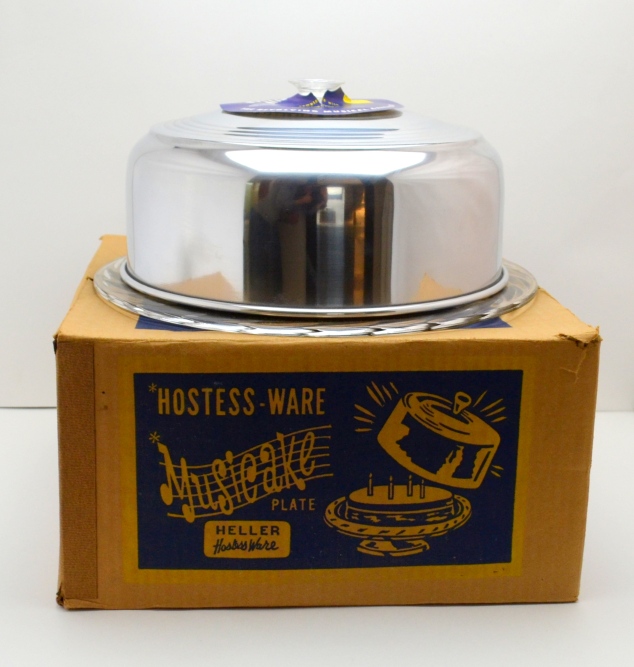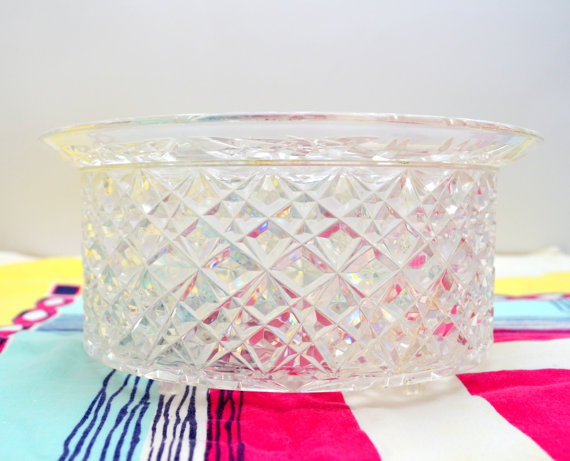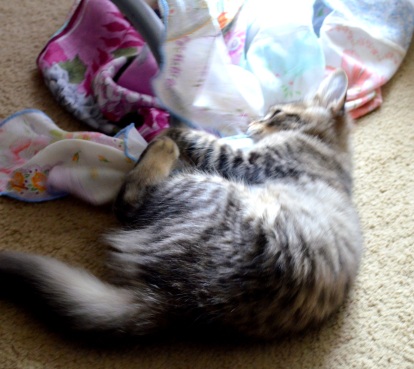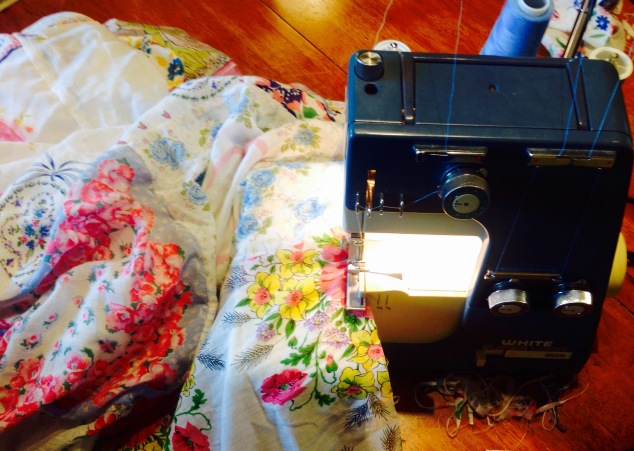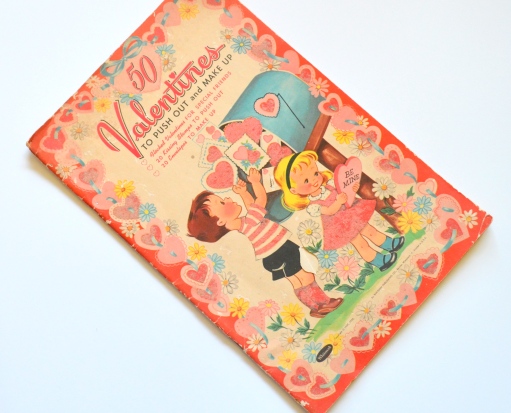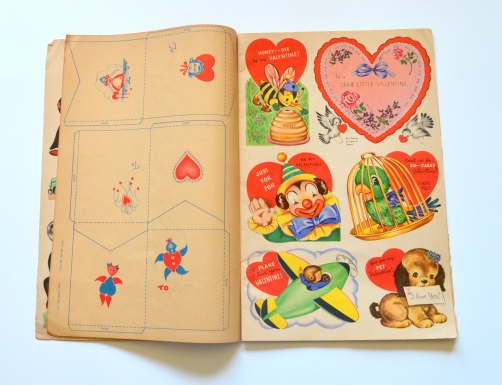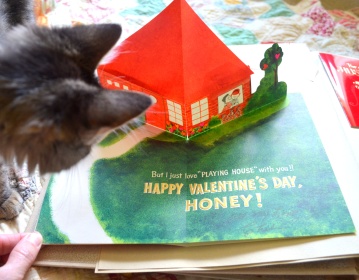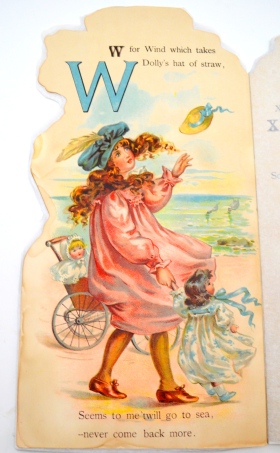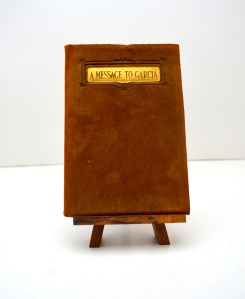I have a rather deep and enduring passion for vintage quilts. To me, they represent everything that is meaningful about vintage: beautiful to look at but practical at the same time; made to last for generations and not be tossed aside when a newer style emerges.
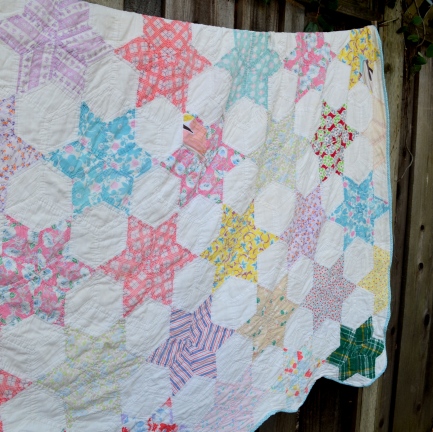
But vintage quilts also appeal to me on a highly emotional level, as it is a direct connection to the woman who made it generations ago. I love to see the hand stitched binding. I like to find all the places where a quilt has been mended by hands that held a needle long before I was born. I smile at the uneven stitching, thinking perhaps it was done by someone in a hurry or who was perhaps new to sewing. I marvel when I see hand stitching so perfect it could be mistaken for machine done.
But most of all, I love the fabrics. I literally go weak in the knees when I see old feedsack quilts from the 1930s. The charming patterns and faded colors of vintage feedsack evoke a whole world for me, of fresh eggs, home baked bread, aprons and fresh air. And the feel of these quilts – ah, they are like magic! So soft and buttery from years of use. Who wouldn’t want to wrap themselves up in one?
With all this in mind, you may understand why I snap up ancient quilts that most people would pass right by without a second thought. I find quilts that are torn, stained, and well loved to the point of being abused. I actually prefer these timeworn quilts over the gorgeous museum pieces that are meant for display only. While they may be breathtaking to look at, I want to *use* my quilts and not just look at them; museum quality anything does not fit in with my cat-loving, child-rearing, creative-messy lifestyle.
So it was when I came across this quilt. This poor thing had seen better days, all of them eons ago. A short list of the problems:
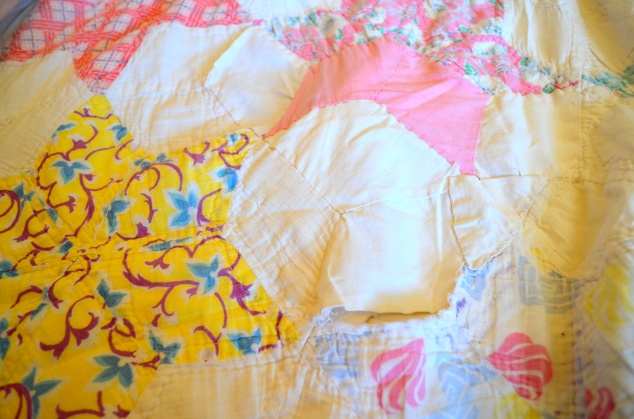
Huge amounts of seams had detached from their moorings
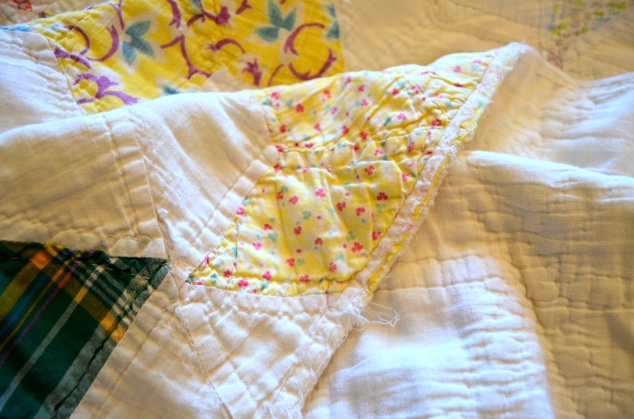
The binding was completely worn away on all sides

Good heavens. The less said about this the better.

And there were stains. Many stains.
Most quilt restorers will tell you to do your repairs first, then clean it. I don’t do that. If I am going to have a quilt sitting in my lap for the better part of a week, I would prefer it to not smell like a barn, thank you very much.
So, the first thing I do is scrub out the bathtub, fill it with hot water, then add 1/2 cup of OxiClean and 1 tbsp of Orvus Quilt Soap. Then I let the quilt soak for about 4-6 hours.
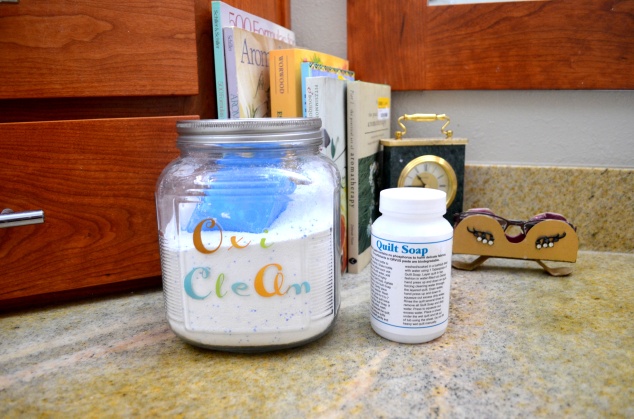
Don’t you just love the little holder for my eyeglasses in the background? That was my grandmother’s.
I then drain the water, rinse the quilt, gently squeeze out the excess water, and do it all over again. Often, the color of the water after the first soak is rather frightening; for that reason, I almost always soak it twice before I work on it.

Rubber duckies optional
The next step is to dry it. The best way to do this is to lay several color-safe towels and/or blankets on your grass and spread your quilt out to dry, preferably not in direct sunlight. But I live in California. We used to have a lawn, but thanks to this ghastly, never-ending drought, we now have a dry, dusty patch of dirt which is not ideal for quilt drying purposes. So this is how I dry my quilts:

On a collapsible wooden drying rack. Not ideal, but it gets the job done.
Once dry, I lay the quilt on the floor and mark all the problem spots with quilt binding clips.

This picture is misleading: I think I used a whole package of clips!
Then I choose which machine I’m going to use to make the repairs. I own somewhere between 40 and 50 vintage sewing machines, and I love every single one of them. For this quilt, I used my Singer Rocketeer from the 1950s. How I LOVE this machine! Mine is missing the lid on top, but no matter. I got her for $20 at a thrift store, totally frozen and with wiring scary enough to make an electrician run away in horror. I replaced her wiring, cleaned and oiled her, and now she is a rockstar.
Anyway, I zig zagged over all the loose seams with white thread. And there were many. loose. seams. This took hours.
Then, I put various types of patches or “quilt band aids” on the many holes, tears and frayed fabric pieces that covered the quilt.

The ghastly blue and yellow star from the picture above? I replaced that with modern fabric.
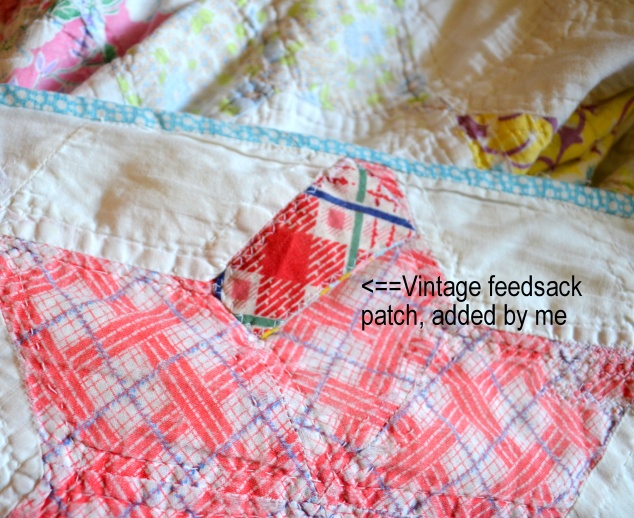
If the holes were small, I covered them with vintage feedsack from my own collection

Holes in the middle of a white fabric piece, I put in an embroidery hoop and darned on my Rocketeer
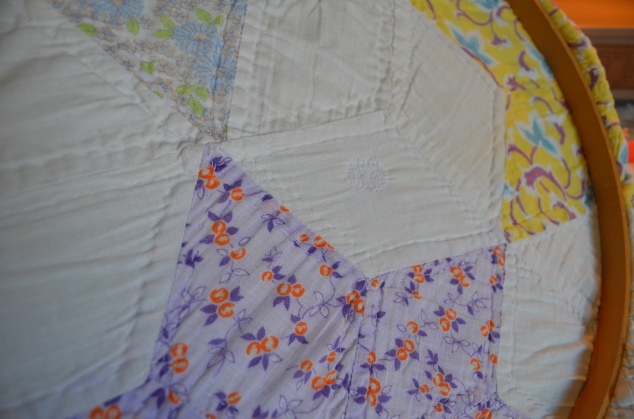
All better!
There were a few problem spots that couldn’t be darned easily or covered up with fabric patches. For these, I used “quilt band aids”: twill tape that I have stamped with permanent fabric ink and heat set with a hot iron. Like so:
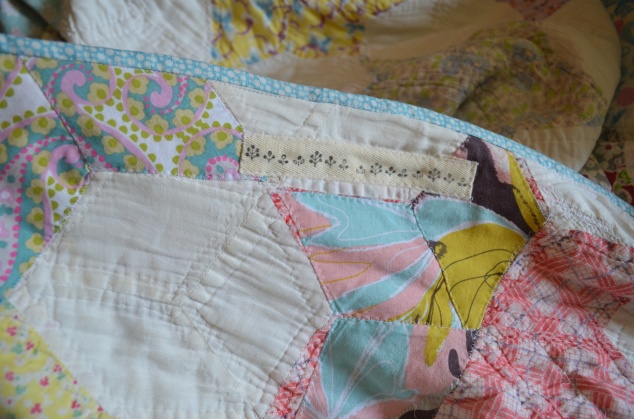
This is a technique I often used to add a bit of pizzazz when I made clothing for my children. It adds a modern touch to the quilt, which I rather like.

Tools of the trade

Finished band aids
Finally, I replace the binding. For this quilt, I used some modern fabric that I thought would go nicely with the feedsack. Unfortunately, when I cut away the bad binding on the scalloped edges, the scallops were no longer even due to the damage; I repaired it as best I could, but it still looks a bit wonky.

Some of the new scallops are a bit pointier than the old…but it’s still an improvement!
Another note on binding: I don’t have the skill, the time, nor the patience to hand stitch binding. I always use a sewing machine to bind a quilt. It may not be as pretty as hand stitching, but it will last a lot longer. I use Cluck Cluck Sew’s machine binding tutorial and that totally works for me!
When all is said and done, we don’t have a museum piece, but rather a quilt that is ready to be used once more. Put it on a bed, wrap yourself up in it while watching a movie, take it to the beach, or use it for a picnic – it’s all good. And you don’t need to worry if your dog jumps on it, or if it becomes your toddler’s favorite blankie to snuggle in when his tummy is upset.
So no, it’s not museum quality: but it wasn’t meant to be. This quilt was meant to be used, not just admired. Enjoy it.
